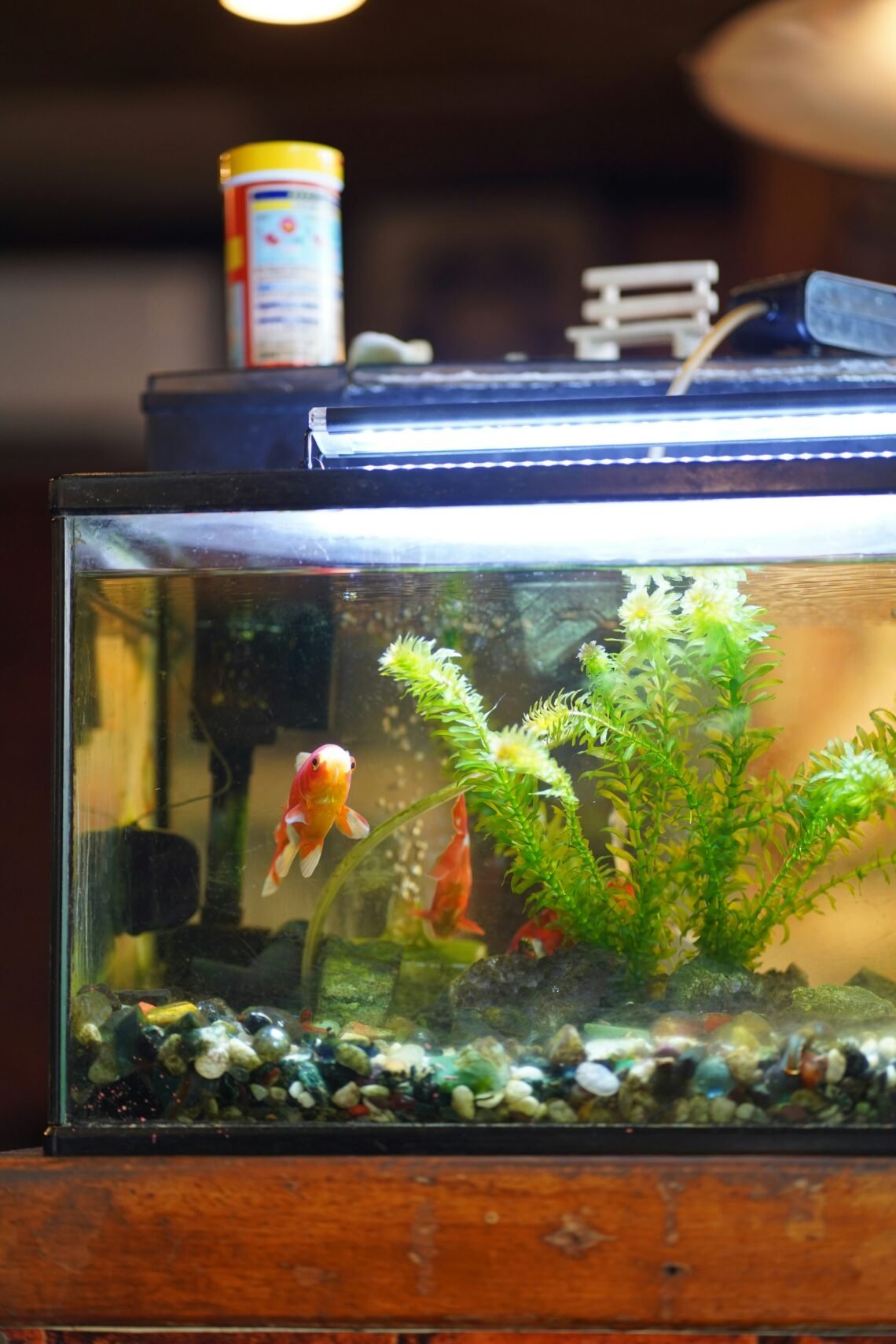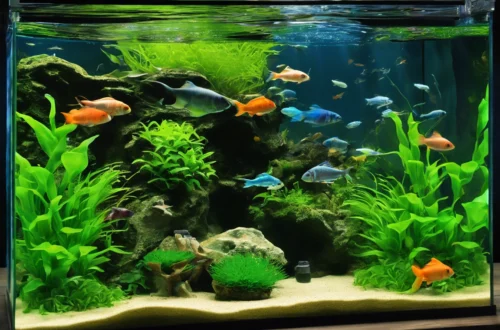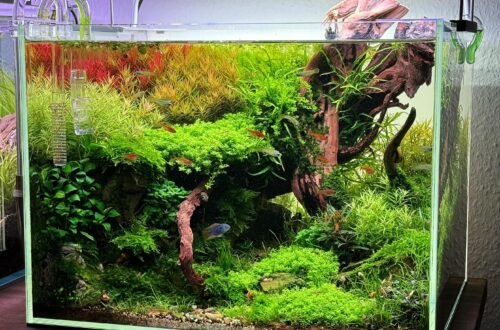Lighting is one of the most important, yet often overlooked, factors in keeping an aquarium healthy. Proper lighting not only enhances the visual appeal of your tank but also plays a vital role in the health of your fish, plants, and even the tank’s ecosystem. When I first started out with aquariums, I thought any light would do, but I quickly learned that maintaining the right type and amount of lighting makes a huge difference, especially if you’re keeping live plants or sensitive fish species.
In this guide, I’ll walk you through everything you need to know about maintaining proper lighting for your aquarium. Whether you’re keeping a fish-only tank, a planted tank, or a reef aquarium, this guide will help you make informed decisions to keep your aquatic environment thriving.
Why Proper Lighting Is Important
Lighting affects more than just the aesthetic of your aquarium. It plays a crucial role in regulating your fish’s biological rhythms, supporting the growth of live plants, and controlling algae. Without proper lighting, you could end up with a tank full of stressed fish, dying plants, or an overwhelming algae bloom.
- Fish health: Fish use light to regulate their internal clock, known as their circadian rhythm. Proper lighting ensures they follow a normal day-night cycle, which reduces stress and promotes healthy behavior.
- Plant growth: Live plants rely on photosynthesis, which requires the right amount and type of light. Without it, plants may struggle to grow or turn yellow and die off.
- Algae control: Too much or the wrong kind of light can promote excessive algae growth, turning your tank into a green mess. Balancing light exposure is key to keeping algae in check.
For a deeper dive into how light affects your tank’s ecosystem, check out How Light Affects Aquarium Ecosystems.
Step 1: Choose the Right Type of Lighting
There are various types of aquarium lights available, and the one you choose depends on the type of tank you have—whether it’s a simple fish-only setup, a planted aquarium, or a more complex reef tank.
1.1 Types of Aquarium Lighting
- Fluorescent lighting: Widely used in standard aquariums, fluorescent lights provide decent light output and are relatively inexpensive. They work well for fish-only tanks and low-light plants.
- LED lighting: LED lights are energy-efficient, long-lasting, and versatile. They’re a great option for most aquariums because they come in various intensities and colors, allowing you to fine-tune the light for fish or plants. I personally switched to LED for my tanks because they offer great control over light intensity.
- T5 and T8 lighting: These are high-output fluorescent lights typically used for heavily planted or reef tanks. They provide the intensity required for demanding plants or coral.
- Metal halide lighting: Mostly used in reef aquariums, these lights emit a powerful, concentrated light suitable for coral growth. However, they produce a lot of heat and may require additional cooling equipment.
For more details on choosing the right lighting system, visit Guide to Aquarium Lighting Types.
1.2 Consider the Light Spectrum
The spectrum, or color temperature, of the light you use is crucial for plant growth and overall tank health. Different aquatic plants and corals require specific light wavelengths for photosynthesis.
- 6500K to 7000K (Daylight): Ideal for planted tanks as it mimics natural sunlight and supports photosynthesis. This is the most common spectrum used in freshwater planted aquariums.
- 10,000K and above: This cooler light is best for reef tanks, as it promotes coral growth and makes the water appear more blue. It’s not suitable for most freshwater tanks unless you’re growing specific light-demanding plants.
Step 2: Set Up a Lighting Schedule
Maintaining a consistent lighting schedule is essential for the well-being of your fish and plants. Too much light can encourage algae growth, while too little can stunt plant growth and confuse your fish.
2.1 Ideal Light Duration
- For fish-only tanks: Aim for about 8 to 10 hours of light per day. Fish don’t need intense lighting, but they do benefit from a consistent day-night cycle.
- For planted tanks: Planted aquariums usually need 10 to 12 hours of light per day. This ensures plants get enough light for photosynthesis, but not so much that algae takes over.
- For reef tanks: Coral and other light-demanding invertebrates require 10 to 12 hours of high-intensity light per day, with some reef keepers even using dim “moonlight” for a more natural night cycle.
2.2 Use a Timer for Consistency
One of the easiest ways to maintain a proper lighting schedule is to use a timer. Timers ensure your lights turn on and off at the same time every day, which is especially helpful if you’re busy or forgetful (like me!). Consistency is key for regulating your fish’s circadian rhythm and preventing algae blooms.
If you need more tips on setting up a lighting schedule, visit How to Set Up a Lighting Schedule for Your Aquarium.
Step 3: Adjust Lighting for Different Tank Types
Not all tanks require the same lighting setup. Depending on whether you have a fish-only tank, planted tank, or reef tank, you’ll need to adjust your lighting intensity, duration, and color spectrum.
3.1 Lighting for Fish-Only Tanks
Fish-only tanks are the simplest to light because fish don’t have high lighting needs. Any standard aquarium light will do, but make sure to avoid overly intense light, as this can stress the fish or promote algae growth. Moderate lighting for 8-10 hours per day is enough.
3.2 Lighting for Planted Tanks
For a planted tank, lighting is more complex. Plants need the right amount of light to photosynthesize and grow, but too much light can lead to algae problems.
- Low-light plants: Plants like Anubias, Java fern, and Cryptocoryne do well with low to moderate lighting (1-2 watts per gallon).
- High-light plants: More demanding plants like Amazon swords and Carpeting plants need stronger light (2-4 watts per gallon) and may even benefit from CO2 injection.
3.3 Lighting for Reef Tanks
Reef tanks, which house corals and invertebrates, require the most attention to lighting. Corals depend heavily on light for photosynthesis, and different species have varying light requirements.
- Soft corals: These require moderate light, similar to what’s needed in a planted tank.
- SPS (Small Polyp Stony) corals: These need intense light,
often provided by metal halide or high-output LED lighting. They thrive under 10,000K or higher light to simulate the deep blue ocean environment where they naturally grow. SPS corals are the most demanding in terms of lighting and require precision to ensure they get enough energy for growth.
For more on specific lighting needs for reef tanks, check out Lighting Requirements for Reef Tanks.
Step 4: Preventing and Managing Algae Growth
One of the biggest challenges with aquarium lighting is preventing algae blooms, which are often caused by excessive or improper lighting. Algae can quickly take over your tank, covering plants, glass, and decorations if not kept in check.
4.1 Limit Light Duration
If you notice algae starting to grow in your tank, the first thing to check is your lighting schedule. Reducing the light duration by an hour or two each day can help keep algae under control. Most tanks do well with about 8 hours of light per day, so start here and adjust based on how your tank responds.
4.2 Balance Light and Nutrients
In a planted tank, algae often grow because of an imbalance between light and nutrients. Too much light combined with excess nutrients (from fish waste or overfeeding) creates a perfect environment for algae to thrive.
- Increase plant growth: Healthy plant growth can outcompete algae for resources. Make sure your plants are getting the right nutrients, either through root tabs or liquid fertilizers.
- Reduce nutrient load: Perform regular water changes and avoid overfeeding to reduce the amount of waste and organic matter that algae feed on.
For more detailed solutions, check out How to Prevent Algae Growth in Aquariums.
Step 5: Regularly Clean Light Fixtures and Bulbs
Dirty light fixtures can reduce the effectiveness of your aquarium lighting, as dust, salt creep, and water stains can block the light from fully penetrating the water.
5.1 Clean Bulbs and Covers
Every few weeks, take a soft cloth and wipe down the light covers or bulbs to remove any buildup. This ensures maximum light output and prevents overheating of the fixture.
5.2 Replace Bulbs When Needed
Over time, light bulbs (especially fluorescent and metal halide bulbs) lose their intensity even if they still appear to be working. Replace them at least every 6 to 12 months to maintain the right light levels for your tank. LEDs tend to last longer and only need replacing after several years.
For more on maintaining your light setup, visit How to Clean and Maintain Aquarium Lights.
Step 6: Monitor Your Tank’s Lighting Needs Over Time
As your tank evolves, so might its lighting needs. Plants grow larger, corals expand, and your fish might require changes in their environment as they mature. It’s important to monitor your tank regularly and adjust your lighting as needed.
6.1 Observe Plant and Fish Behavior
Keep an eye on your plants and fish. If plants appear to be stretching toward the light or turning yellow, they may need more light or a different spectrum. If your fish seem stressed or if you notice excessive algae growth, you may need to reduce the light intensity or duration.
6.2 Use a PAR Meter (For Advanced Tanks)
For serious aquarists, especially those with planted or reef tanks, investing in a PAR meter can help measure the intensity of light reaching different areas of the tank. This tool helps ensure all parts of your tank are receiving the correct amount of light for optimal plant or coral growth.
Maintaining proper lighting is essential for a healthy aquarium, whether you have a simple fish-only setup, a planted tank, or a reef tank. The right lighting not only supports the well-being of your fish and plants but also helps you manage algae and keep your tank looking vibrant. By choosing the right lighting system, setting up a consistent schedule, and regularly monitoring your tank, you can ensure that your aquatic environment thrives.
If you’re ready to dive deeper into aquarium lighting, check out our comprehensive guide here: Complete Aquarium Lighting Guide.
FAQs
1. How many hours of light do aquarium plants need?
Most aquarium plants need about 10 to 12 hours of light per day. Adjust based on the plant species and tank conditions, but avoid excessive light to prevent algae growth.
2. Can I leave my aquarium light on all night?
No, fish and plants need a day-night cycle to stay healthy. Leaving the lights on 24/7 can cause stress for fish and promote algae growth. Use a timer to maintain a consistent light schedule.
3. What’s the best lighting for a planted tank?
LED lights with a color temperature around 6500K-7000K are ideal for most planted tanks. They provide the right spectrum for photosynthesis and are energy-efficient.
4. How do I stop algae from growing in my tank?
Limit light exposure to 8-10 hours per day, balance nutrients in the tank, and regularly clean algae off surfaces. Adding algae eaters like Amano shrimp or Siamese algae eaters can also help control algae growth.
5. When should I replace my aquarium light bulbs?
Fluorescent and metal halide bulbs should be replaced every 6 to 12 months to maintain proper intensity. LED lights typically last much longer and may only need replacing after several years.







One comment on “How to Maintain a Proper Aquarium Lighting”